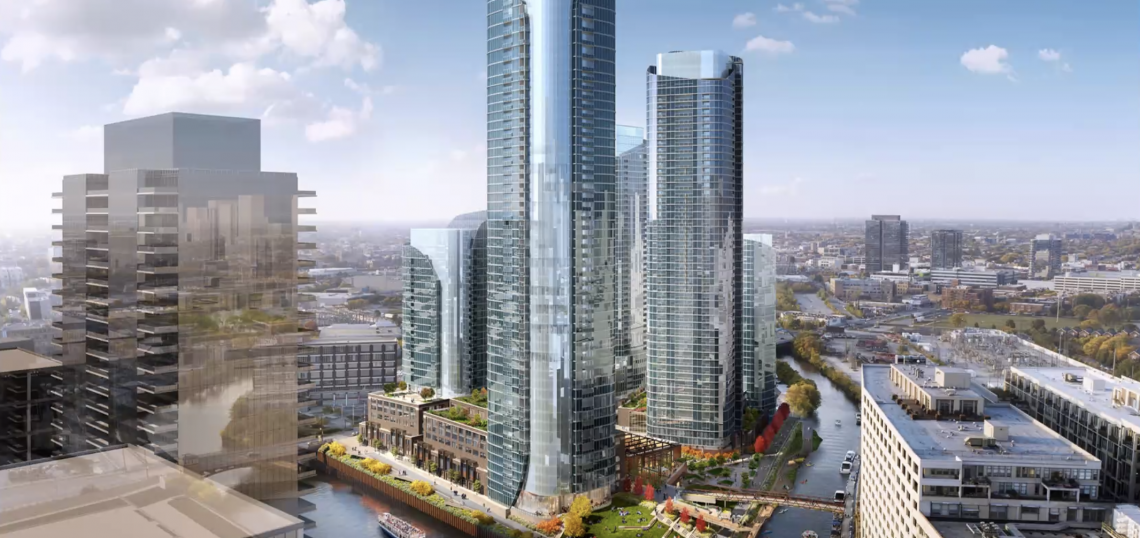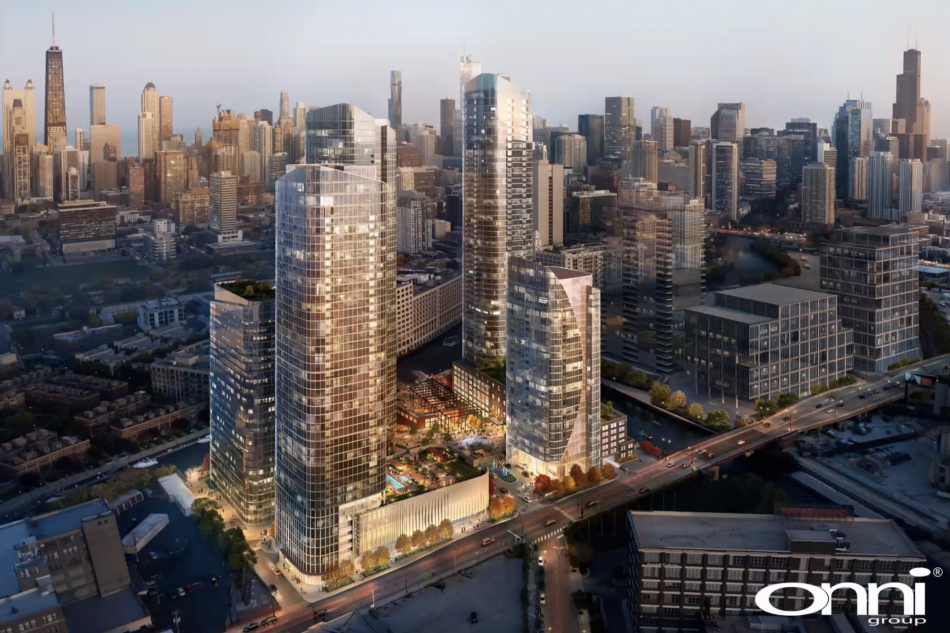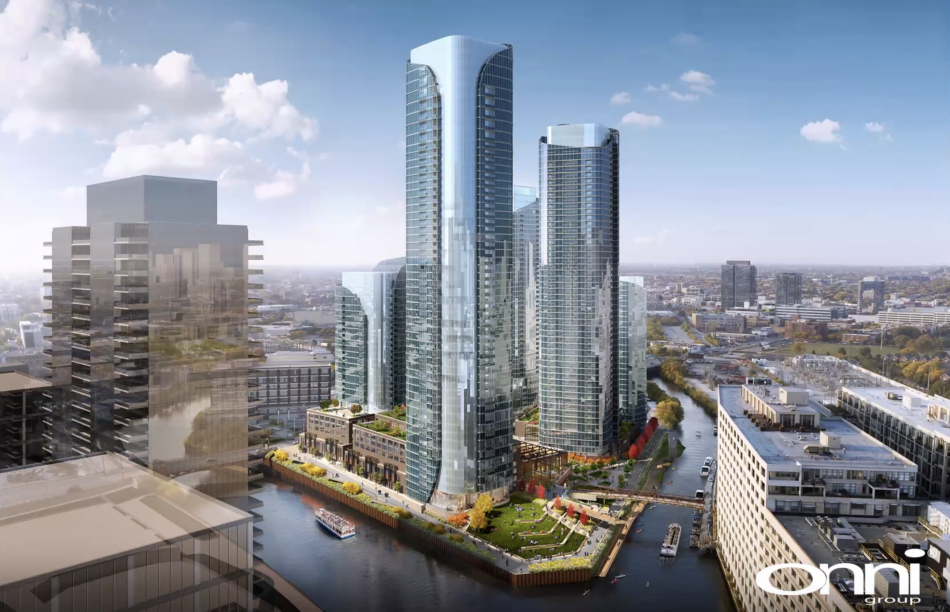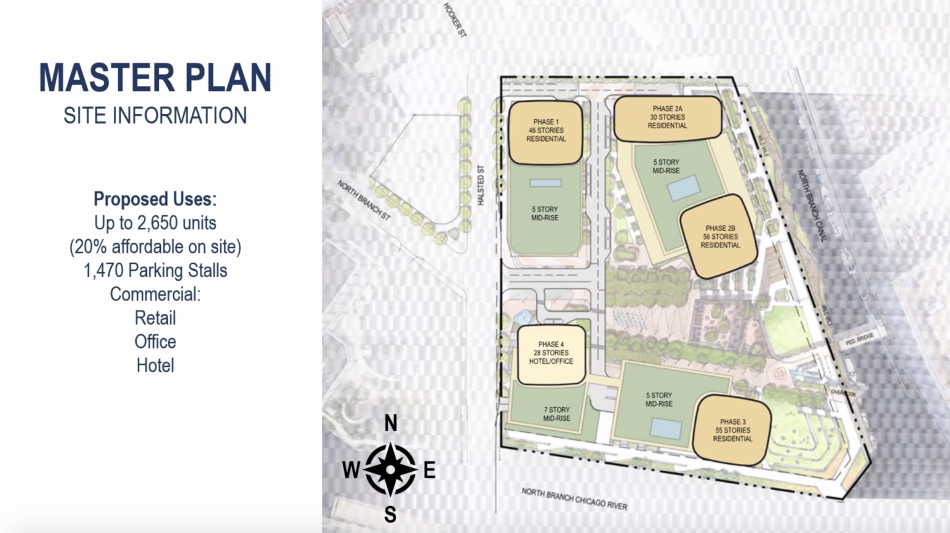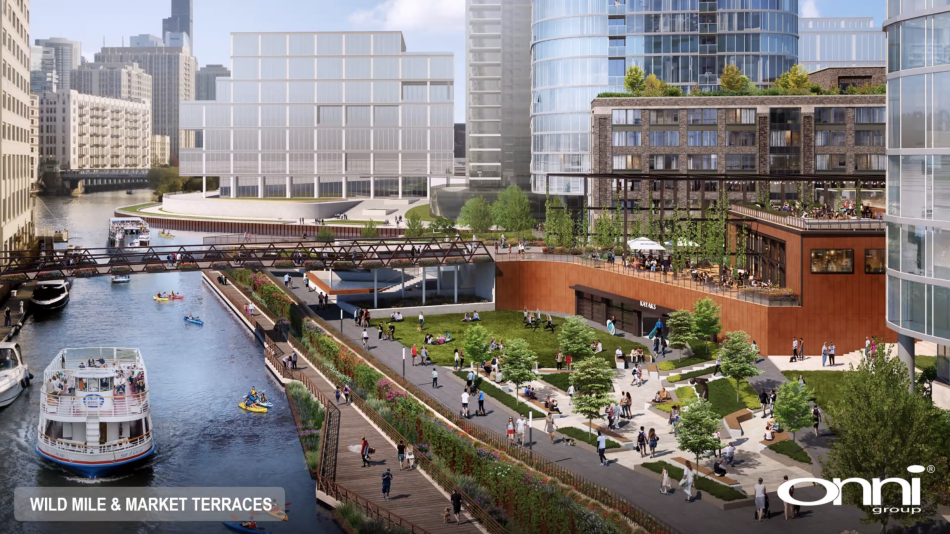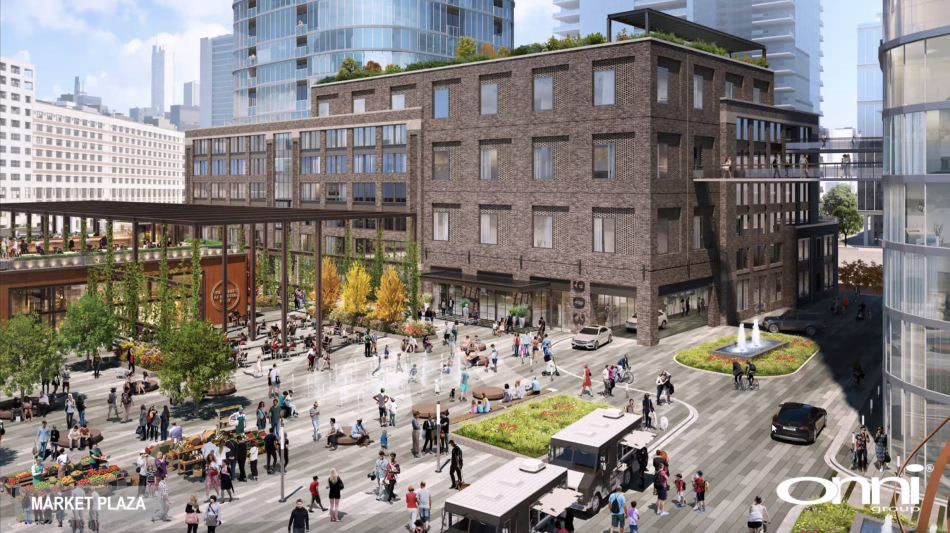Vancouver-based developer Onni Group has revealed its plans for "Halsted Point," a four-phase project that would bring five high-rise towers ranging from 28 to 56 stories to the southern edge of Goose Island.
The massive mixed-use proposal calls for 2.7 million square feet of development an 8-acre site previously home to the Greyhound bus maintenance facility at 901 N. Halsted Street. The completed project will deliver 2,650 rental apartments (20 percent on-site affordable), 108,000 square feet of office space, 54,000 square feet of retail, 1340 linear feet of public riverwalk, and 3.8 acres of open space.
"Given this scale of this community and certain economic realities, this will be a multiphase project," said Onni vice president of development Brian Brodeur at a virtual community meeting on Thursday. "We are anticipating this to be a four-phase project beginning early next year. The timing of subsequent phases will be based on market demand, but we feel this will be a 10-plus-year overall build-out."
Onni still needs zoning approval for Halsted Point, but it aims to break ground on the first phase—a 46-story residential tower and grocery store at the site's northwest corner—in 2022. Construction on phase one is expected to take 24 to 30 months. Later phases will be added in a clockwise pattern and call for three more residential towers (the tallest rising 584 feet) and a commercial high-rise with offices and hotel rooms.
The commercial tower will be located on the southwest corner to act as a "buffer" between the new residential towers and the site's industrial neighbors. "We believe residential is going be much quicker to come back post-pandemic than commercial," said Brodeur. "That's the reason we've phased our site the way we have, with our commercial building last."
The five-tower is designed by Hartshorne Plunkard Architecture, the Chicago-based firm that also designed Onni's multiphase Old Town Park development at Division and Wells. Architect Aracely Nevarez described the glassy towers at Halsted Point as a "modern and sculpted" response to the city skyline, while the brick-clad lower levels tie into the industrial buildings found in the area.
The project's buildings are aligned in a way that keeps the tip of the island, arguably the site's best real estate, open. "We had an opportunity to place a tower right at the corner and take full advantage of the city skyline views," explained Nevarez. "But the more we studied this, it made more sense to leave that area open and create a social lawn that can be enjoyed by all."
The so-called "social lawn" is joined by other open space improvements including a new riverwalk and bike trails around the site's parameter and a "market plaza" that will act as the development's town square. Halsted Point is also designed to connect to the nearby Wild Mile—an ongoing initiative to naturalize the North Branch Canal into an eco-park and boardwalk.
There are plans to construct a new pedestrian bridge connecting Halsted Point to the riverfront promenade at 600 W. Chicago. That portion of the plan will need the cooperation of the Army Corps of Engineers to become a reality, the development team said.
The completed project will contain 1,470 parking spaces. The majority of the stalls as well as all of the site's loading and trash removal will be located below grade. The plan does feature some above-grade parking, but the spaces will be concealed behind active uses such as rental townhouses included in the second and third phases.
The developers will work with CDOT to widen Halsted Street, eliminate on-street parking, upgrade signals, and make turn lane and bike lane improvements near the site. There are currently no plans to widen either of the Halsted Street bridges, but the development is situated along the future route of a potential transitway identified in the city's North Branch Framework Plan.
The Halsted Point project will use no controversial TIF money. The developers will contribute more than $28 million to the city, including Industrial Corridor System Fees and payments into the Neighborhood Opportunity Fund.
According to Onni, the development is expected to create just shy of 10,000 construction jobs and generate $716 million in taxes over the next 20 years. Onni closed a deal to purchase the Greyhound site for $38 million in early 2019.
"When I was kid, growing up right over the bridge from, here we used to call this area ghost town," said Ald. Walter Burnett (27th) at Thursday's meeting. "Now this area is very vibrant. We're allowing for some residential [development], some new infrastructure is getting built, and the riverwalk is getting enhanced. A lot of great things are happening."





